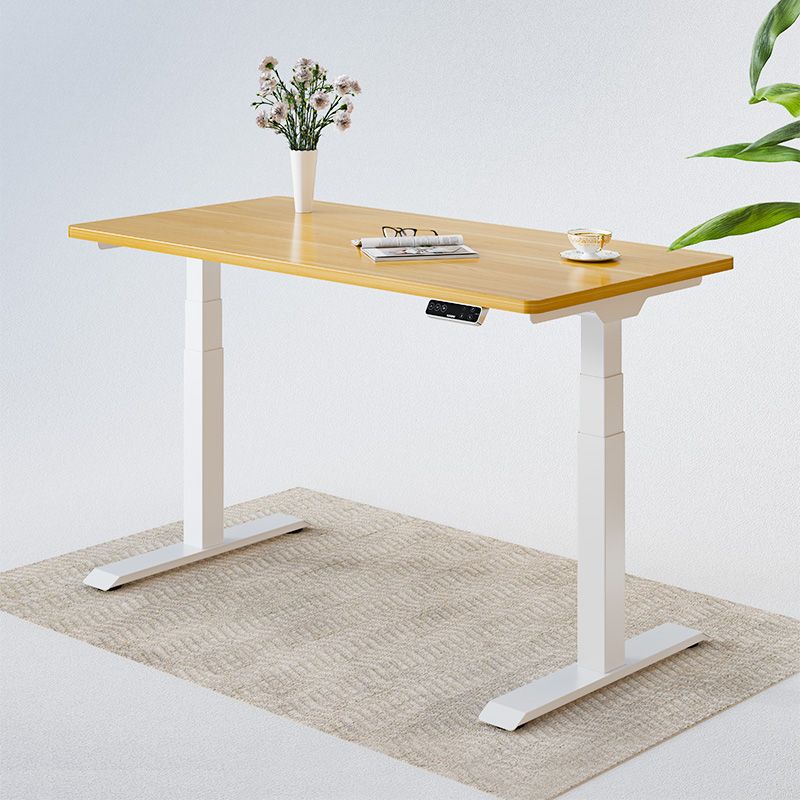Research shows that about 23.3% of workers in the UK experience a migraine at work. The migraines can be so strong that they affect your productivity at work. Sometimes, you even have to take some time off to reduce the severity of the symptoms. If you get some relief after leaving your desk, then the migraine triggers are right at your desk. Some adjustments such as getting an ergonomic desk may significantly reduce your migraine attacks. Here are some tips on how your desk can help you eliminate migraine triggers.
What is a Migraine?

A migraine is a chronic headache, usually on one side of your head, which causes a throbbing pain affecting your sight and may make you feel nauseous or vomit. The pain can last for hours or days and may be so severe that it affects your productivity. Some people report some types of light and sound as triggers for their migraines. However, wrong working posture is another major trigger for migraines.
Currently, there is no cure for migraines, but some treatment methods can help you reduce or prevent migraine attacks. Although it can take time to get a treatment plan that works for you, identifying the migraine triggers helps you to manage the condition.
How Can Your Desk Help You Minimize Migraine Attacks?
If your migraines are triggered by poor posture at work, here are some adjustments you can try:
1. Get an Ergonomic Desk
Migraines can be triggered by poor posture, which strains your neck muscles. If your desk is too high or too low, you will strain your neck muscles as you write or work on your computer. The pain in your neck muscles may trigger a migraine attack that may affect the rest of your working hours, or even cost you a day off work. Getting an ergonomic office desk could be the first step of reducing migraine attacks.
2. Switch to a Standing Desk

Sitting for long hours can also trigger a migraine. If you have a very tight schedule, you can alternate between sitting and standing as you work on your project. However, you need a standing desk or an adjustable office desk to work comfortably while standing. Besides the desk, you should also ensure you use an ergonomic office chair that is correctly adjusted. Your office chair should be high enough to ensure you do not strain to view your computer screen or when working at the desk.
3. Reduce Computer Glare
Computer glares are common migraine triggers. Reducing the glaring light from your computer or other electronic devices on your desk will help you minimize migraine attacks. Eye strain may also trigger a migraine if your computer is not placed in the right position.
You can ensure your computer is well positioned by getting ergonomic office furniture. The ergonomic office furniture allows you to place the computer at an angle that reduces your eye strain. You can also have a pair of blue light blocking glasses on your desk.
4. Control the Light at Your Desk
Place your desk next to the window or where you can access natural light. However, avoid light glares such as reflections or direct sunlight. If you are working at night, ensure the lighting at your desk appears natural.
5. Minimize Sounds at Your Desk
The sound of a printer or a photocopier may trigger a migraine in some people. You can eliminate this trigger by placing the printer or photocopier away from your desk. You should also ensure the caster wheels of your chair are properly fitted and run smoothly on the floor. Poorly fixed caster wheels increase friction, which produces sharp sounds that can trigger a migraine. You can also place your desk away from other disturbing noises.
6. Keep a Bottle of Water at Your Desk
You can also reduce migraine attacks by taking enough water. Research shows that keeping your body hydrated reduces the risk of migraine attacks. Besides its effectiveness in preventing headaches, water is also cheap and easy to store. You can keep a bottle of water at your desk, especially if you work for long hours.
7. Get a Desk Fan
High temperatures can also trigger migraines. It is advisable to have a desk fan to cool the air around your desk. However, you need to ensure the desk fan does not produce sounds that may trigger your migraine. Other than having a desk fan, you should also ensure your office is well ventilated.
Invest in Ergonomic Furniture Today
Migraines not only reduce your productivity, but also affect the quality of your life. At Flexispot, we provide you with ergonomic desks and chairs that help you reduce or eliminate migraine triggers. If you need an ergonomic desk, you can check our collections at Flexispot